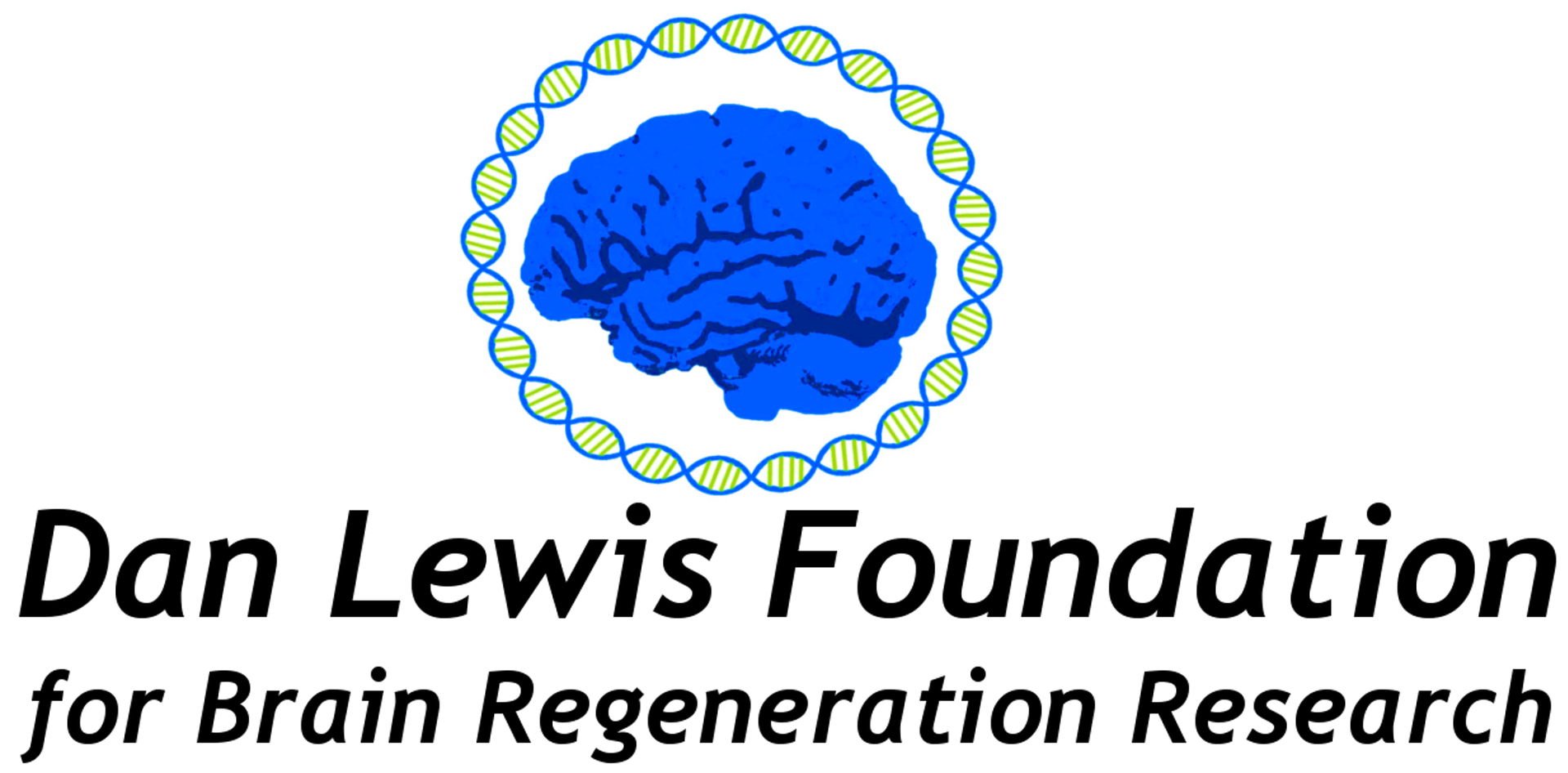News & Events

On July 10, 2025, the Advanced Research Projects Agency for Health (ARPA-H) announced a major initiative titled Functional Repair of Neocortical Tissue or FRONT. The announcement states “FRONT will pioneer a curative therapy for the more than 20 million adults in the US living with chronic neocortical brain damage from neurodegeneration, stroke, trauma, and other causes, which costs the country an estimated $800 billion per year. Worldwide, more than 200 million people live with debilitating after-effects of brain damage.” A set of informational meetings about this program and a due date for outlines of potential proposals have been set for August. Full proposals are due by September 25, 2025. Complete instructions, specifications, and expectations are delineated in the ARPA-H FRONT announcement. The FRONT announcement includes a clear expectation that the successful brain regeneration methods that are discovered will be used in clinical trials with persons with brain injury by the fifth year of the program. The DLF lauds ARPA-H for initiating this program. We are discussing possibilities for playing a supportive role as proposals develop. This exciting program is congruent with the original overarching goals of the DLF and confirms the validity of its mission.
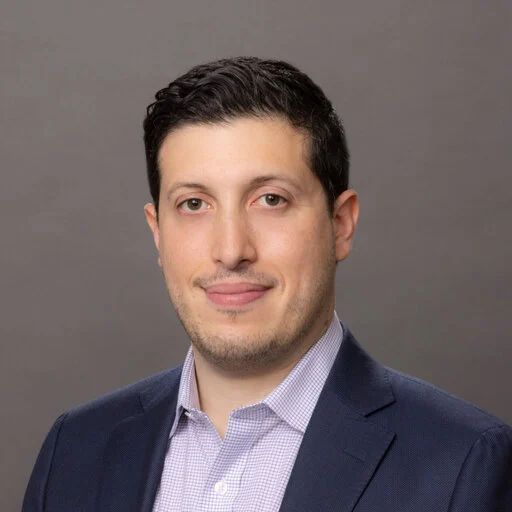
Dr. Burrell is a translational neuroengineer in the Departments of Neurosurgery and Oral & Maxillofacial Surgery at the University of Pennsylvania. His research integrates advanced neural repair strategies with clinical translation, focusing on axon protection, nerve fusion, and engineered neural tissue for neurotrauma recovery. Dr. Burrell has led the development of multiple first-in-field innovations—including the first large-animal model of nerve fusion, delayed axonal fusion protocols, and the first orally active axonal protectants—positioning him as a recognized leader in regenerative neurotechnologies. He is co-founder of Neurostorative LLC and plays a central role in several other platforms aimed at neural reconnection, long-term preservation, and bio-integrated prosthetic systems.
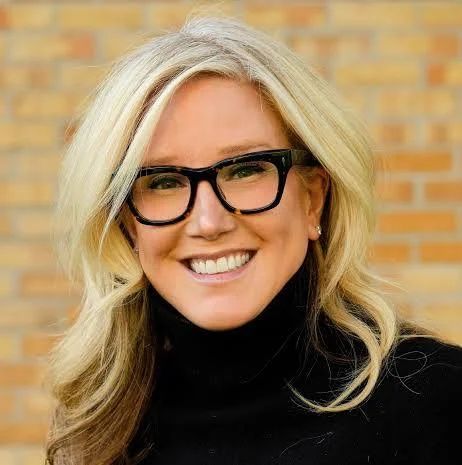
Dr. Kim Gorgens is a board-certified rehabilitation psychologist and Professor of Psychophysiology, Clinical Neuropsychology and Psychology of Criminal Behavior at the University of Denver . She manages a large portfolio of brain injury related research and has lectured extensively on those issues around the world. She has a 2010 TED talk on youth sports concussion and a 2018 TED talk on brain injuries in criminal justice with 3.5M views. She has been interviewed on CNN with Anderson Cooper, NPR, and on 20/20 and her work with brain injuries has been featured in USNews , Newsweek , the Economist , People Magazine , and more. She has a small forensic neuropsychology practice with juvenile and death penalty cases and is active in legislative and policy development around best practices in brain injury. Her research studies the reported injury history, cognitive function, and brain biomarkers of all vulnerable populations including young and older athletes, probationers and inmates, persons who are unhoused, and women who have been exposed to interpersonal violence.
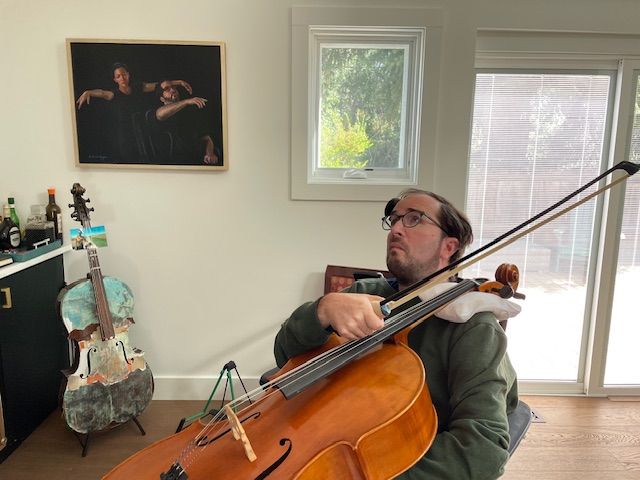
The story of Dan’s 2007 accident and severe brain injury was first posted to the DLF website in 2020. You can read “Dan’s Story” here . Over the past five years, Dan has worked hard to make progress and regain the most basic abilities. He has had to deal with many medical procedures and many challenges. Dan has done so with a calm determination that has helped him move well beyond early predictions of what his long-term status would be. Progress Dan’s medical status has greatly stabilized and his general health has been good for a number of years. Seizures that were prolonged, dangerous and often required hospitalization in the several years after his accident are now much less frequent and much more mild. He has not required hospitalization in almost 10 years. Dan’s receptive language skills have improved noticeably. He demonstrates understanding by following any motor direction (including some multi-step sequences) that he is capable of doing physically. He is more engaged in conversations and responds more quickly to questions. His expressive language has also improved. He now uses personal pronouns. He often uses 2-word phrases and sometimes up to 4-word phrases to respond to questions about preferences and feelings. Dan’s cognitive status has improved a good deal as well. He is able to count to 100 and to verbally answer simple addition, subtraction and multiplication questions. He understands the idea of “opposites” and seems to enjoy answering the question “What’s the opposite of…..?” to which he usually gets the correct answer. Dan’s schedule is filled with therapies, activities, and social experiences. He goes swimming once or twice a week, enjoys attending the Colorado Symphony most Saturday evenings, and participates in an integrated dance company called Spoke ‘N’ Motion which rehearses on Sunday afternoons and gives performances several times per year. Playing the cello remains important to Dan. With assistance, he practices his cello for ½ hour every weekday morning. He is able to bow correctly about half of the songs in Suzuki Cello Book #1 and he enjoys playing scales using different rhythmic patterns. Challenges Dan’s responsiveness has improved a good bit but he still has great difficulty initiating actions, intentions, and communication. He can make a choice when several options are presented but he rarely expresses what he wants spontaneously. It is unclear to what degree Dan experiences emotion. From an outside perspective it appears that he is exceptionally even keeled. He rarely seems to be either happy or sad, but sometimes he demonstrates interest or enjoyment by moving his very expressive eyebrows upward. Observing the relative absence of emotional expression in Dan’s everyday experience is difficult for those who love and care for him, particularly in comparison to the vibrant individual we remember. Dan continues to have very significant motor planning and motor control difficulties. He has almost no functional movement on the left side. Controlled purposeful movement on the right side shows improvement but he has a way to go. Dan has what is called cortical visual impairment. This means that while his eyes themselves are not damaged, the vision centers in his brain which process visual input work very poorly. Functionally, this means he doesn’t “see” very much. Moving himself in his power wheelchair has helped to engage his visual system and supported some integration of his vision. Dan still gets 100% of his water and food via his g-tube. His swallow has been evaluated as inadequate to allow oral feeding. Hopefully, this is something we can work on in the next few years without endangering Dan’s health. In the first several years after Dan’s accident, family and friends would often ask “Is Dan making progress?” I would imagine Dan at the one yard line of a one hundred yard football field, needing to travel 99 yards to get to the other end zone at the rate of one inch per week to be fully recovered and restored. That’s a long, long journey…but Dan hasn’t stopped moving forward, however gradually. The DLF is tracking and supporting a growing cadre of researchers in the field of brain regeneration who are capitalizing on stunning biomedical, biotechnological, and bioengineering advances to bring the hope of meaningful brain regeneration into a reality. Although it is unclear whether Dan will be a candidate for emerging brain regeneration methods, it is rather certain that within 5 years, perhaps 10 years at the most, brain regeneration procedures will be effective and increasingly available to people with serious brain injuries. The DLF is proud to play a small part in supporting the important and inexorable movement forward in brain regeneration.
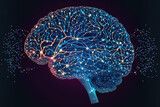
The human brain is remarkable in its complexity, adaptability, and resilience. Yet, millions worldwide face dramatically impaired quality of life due to traumatic brain injuries, strokes, and degenerative neurological diseases. Today, there are no medicines that stimulate the restoration of lost brain functions. Recent research is showing us a path to new medicines that may activate the brain’s inherent capacity for regeneration following severe injury. One notable researcher in this pioneering field is Jared Tangeman at Johns Hopkins University. Tangeman investigates the extraordinary regenerative capabilities of the axolotl, a salamander species uniquely capable of completely regenerating its central nervous system (CNS), including brain and spinal cord tissues. Through sophisticated genetic and cellular analyses, his lab has uncovered essential genetic programs activated during neural regeneration. Tangeman’s laboratory employs innovative models of optic nerve injuries, such as whole-eye enucleation (temporary removal and reimplantation of the entire eye in the salamander) to explore how retinal cells survive extreme conditions and regenerate nerve connections. Utilizing advanced genomic techniques, including single-cell RNA sequencing and chromatin profiling, paired with AI-driven structural modeling, Tangeman identifies critical genes such as ATF3 and RUNX1, which regulate neuronal survival, axon regeneration, and the activation of progenitor cells into new neurons¹. Identifying specific genes involved in regeneration provides precise molecular targets for developing new therapeutic approaches. Once these targets are validated in human cell-based models, they can guide the development of novel medicines, particularly genomically targeted drugs, to enable human brain regeneration after severe injury. Complementing Tangeman’s fundamental research is work led by Justin Burrell at the University of Pennsylvania. Burrell is focused on rapidly translating laboratory findings into clinically viable therapies. His team discovered boldine, a compound with remarkable neuroprotective effects. This compound has been shown to reduce nerve damage and promote nerve regeneration in animal studies². These findings have potential implications for treating nerve injuries and TBI. Additionally, Burrell’s team has developed engineered neural scaffolds, biomaterials designed to guide nerve fibers across injury sites, which have successfully reconnected severed nerves in preclinical studies³. These tissue-engineered constructs, when combined with pharmacological interventions such as boldine, offer promising dual-action treatments capable of dramatically improving recovery outcomes for severe brain injuries. The innovative research by Tangeman and Burrell showcases a powerful synergy—Tangeman’s foundational insights into molecular regeneration mechanisms provide precise targets for novel therapies, while Burrell’s work demonstrates practical strategies immediately applicable in clinical settings. A promising therapeutic frontier inspired by these fundamental discoveries involves genomically targeted medicines such as antisense oligonucleotides (ASOs) and RNA interference (RNAi) molecules. ASOs are short, synthetic molecules designed to precisely modulate gene expression by targeting specific RNA sequences, thus influencing cellular behaviors and disease processes⁴. ASOs have demonstrated clinical efficacy in treating genetic diseases, including spinal muscular atrophy, underscoring their therapeutic potential for neurological conditions⁵. Similarly, RNAi-based therapies, designed to silence specific genes involved in disease progression, have recently entered clinical practice for conditions such as hereditary amyloidosis, further underscoring their potential⁶. Notably, ASO-based therapies are currently being tested in clinical trials for spinal cord injuries, aiming to harness the CNS’s innate ability to restructure itself. These pioneering trials, led by neuroscientists such as Stephen Strittmatter at Yale University, indicate a viable pathway toward applying similar strategies to brain injuries⁷. The convergence of Tangeman’s foundational genetic discoveries and Burrell’s translational approaches positions genomically targeted therapies, including ASOs and RNAi, as highly promising tools for stimulating regeneration and recovery. Once validated in human cell-based models, these targeted genomic strategies can significantly enhance regenerative capacities in human brains after severe injury. Concurrent advances in biomaterials, nanomedicine, and artificial intelligence (AI) further bolster regenerative research. For example, nanotechnologies enable the targeted delivery of therapeutics directly to injured brain regions, increasing efficacy and precision⁸. AI-driven tools rapidly analyze complex genetic and molecular data, swiftly identifying promising targets and therapeutic strategies. Collectively, the groundbreaking efforts of researchers like Jared Tangeman and Justin Burrell, alongside advances in genomically targeted therapies, nanomedicine, and AI, hold transformative potential. These innovations significantly advance our understanding and ability to promote neural regeneration, offering renewed hope and improved quality of life for millions affected by severe neurological injuries.
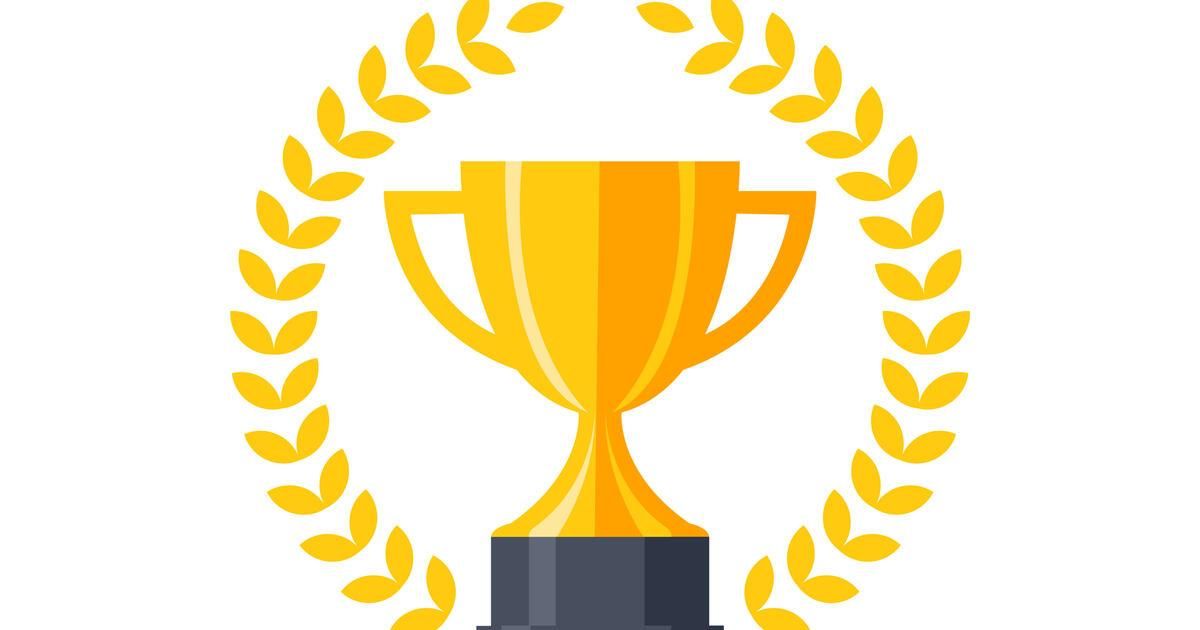
For the third consecutive year, the Dan Lewis Foundation for Brain Regeneration is proud to announce the DLF Prize competition. The 2025 DLF Prize, a $20,000 award, will recognize an outstanding early career scientist (2 to 5 years post-doc) conducting innovative research in neuroscience, pharmacology, or biotechnology. This prestigious prize honors researchers whose work aligns with the DLF mission to drive breakthroughs in neural regeneration and repair. The current research priorities of the DLF are: Pharmacological Reactivation of Neural Repair: Research into pharmacological methods of reactivating or augmenting synaptogenesis, neurogenesis or axonal repair. Cell-Based Cortical Repair: Investigating the potential of derived cortical neurons to restore function in damaged cortical regions. Transcriptomics of Neural Recovery: Characterizing transcriptomic profiles of cortical neurons in the recovery phase following brain injury to identify pathways that drive repair. Molecular Inhibitor Targeting: Advancing anti-sense oligonucleotides (ASO’s) or small-molecule therapeutics designed to downregulate inhibitors of neural regeneration in the cortex or spinal cord. Application for the 2025 DLF Prize can be made by going to our website— danlewisfoundation.org —and clicking on the Tab “ 2025 DLF Prize ”. This will bring you into the application portal. The application portal opened in March, 2025 and will remain open through May 31st. Once in the portal, you will find complete information about the DLF prize, eligibility requirements, and an application form which can be filled in and submitted online. The winner of the 2023 DLF Prize, Dr. Roy Maimon, continues his research indicating that downregulation of PTBP1, an RNA-binding protein, can convert glial cells into neurons in the adult brain (Maimon et al. 2024) .* Dr. Maimon, currently a post-doc at the University of California, San Diego is currently interviewing for a faculty position at several prominent neuroscience departments. The winner of the 2024 DLF Prize, Dr. William Zeiger is a physician-scientist in the Department of Neurology, Movement Disorders Division, at UCLA. Dr. Zeiger has expertise in interrogating neural circuits using a classic “lesional neurology” approach. He states, “Our lab remains focused on understanding how neural circuits become dysfunctional after lesions to the cortex and on investigating novel circuit-based approaches to reactivate and restore damaged cortex”. * Maimon, Roy, Carlos Chillon-Marinas, Sonia Vazquez-Sanchez, Colin Kern, Kresna Jenie, Kseniya Malukhina, Stephen Moore, et al. 2024. “Re-Activation of Neurogenic Niches in Aging Brain.” BioRxiv. https://doi.org/10.1101/2024.01.27.575940.
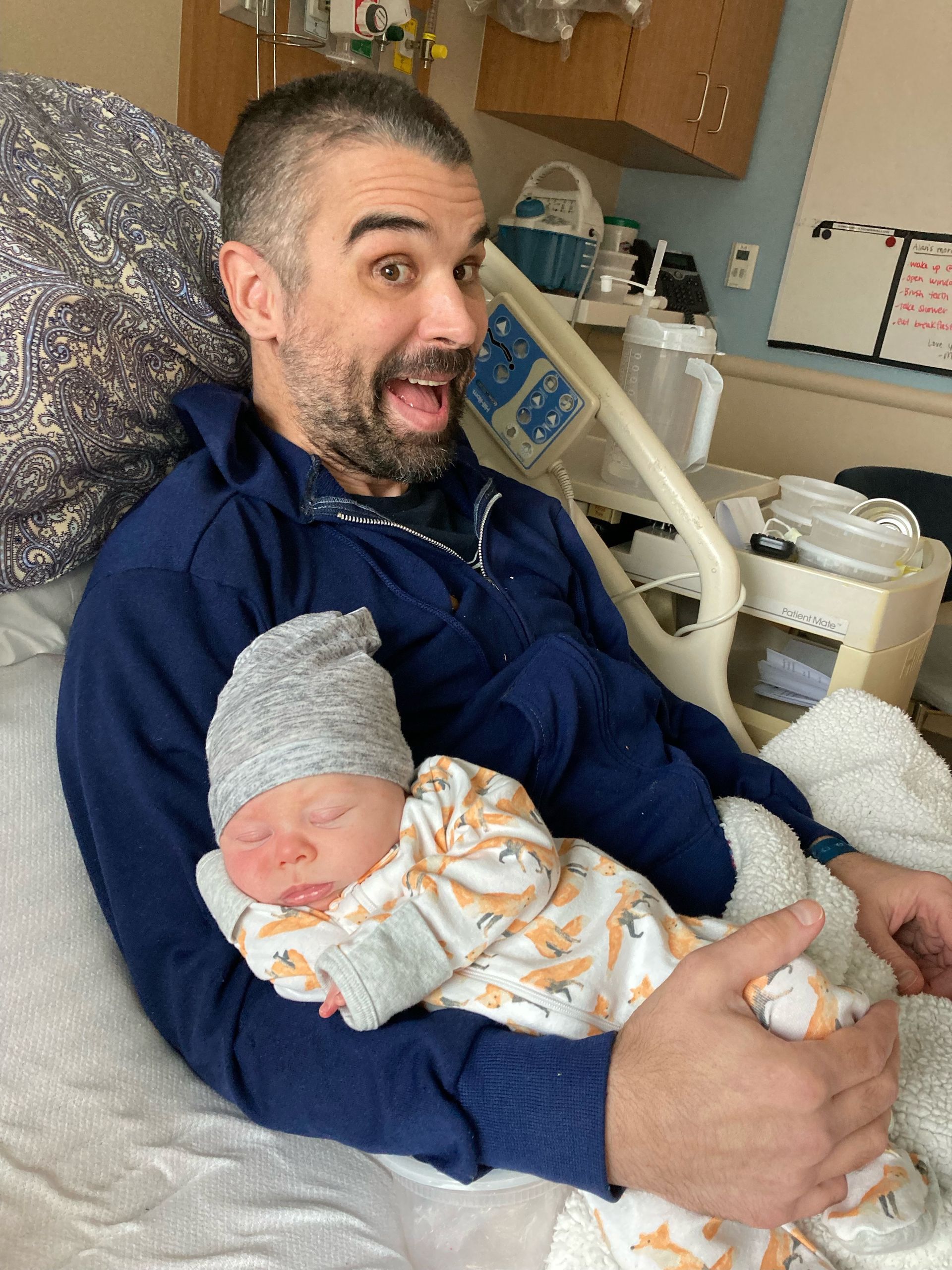
Alan was injured in 2021, at age 42. An art teacher in Lakewood, Colorado, Alan was riding his bicycle after school and was crossing at an intersection when a truck turned into the crosswalk area and hit him. Alan reports no memory of the event but has been told this is what happened. Alan says “My frontal lobe took the brunt of the impact, particularly the left frontal lobe”. Alan had a 2 ½ week stay at a nearby hospital where he, “re-learned to talk, to walk, and drink”-- although again he reports no memory of his stay there. Alan was then transferred to Craig Rehabilitation Hospital, in Englewood, Colorado. Alan says, “The only reason I knew I was at Craig is that I rolled over in bed and saw “Welcome to Craig” on the dry erase board.” During this stage of recovering, Alan repeatedly denied that he had been in an accident. Twice he tried to leave Craig on his own accord despite his wife’s and his therapists’ assurances that it was important for him to stay to recuperate from his injuries. Alan’s wife was 8 months pregnant at the time of his accident and gave birth to their son while Alan was an inpatient at Craig. Alan’s wife brought his newborn son to visit him days after the birth and Alan held him while sitting in his wheelchair, but Alan wistfully reports this is another thing he can’t remember. Alan reports that he still has significant difficulties with memory. Alan has also experienced several other neuropsychological difficulties. He states that for months after his injury, he could not experience emotion. “I could not laugh, I couldn’t cry.” Even after three years, his emotional experience is constricted. However, an emotion that is sometimes elevated is irritation and anger. Sometimes, dealing with people can be difficult because he may have temper flare-ups with little reason. This is something that Alan regrets and he is working hard with his neuropsychologist to improve the regulation of his emotions. Alan also has difficulty with organization, motivation, and distractibility. Earlier in his recovery, he had trouble sequencing and had difficulty carrying out personal and household routines. Alan has benefited greatly from therapy and his own hard work to make improvements in these areas. A chief reason that Alan works so hard in his recovery is so that he can be a good father to his son who is now almost 3 years old. He recognizes that it is important not to get frustrated when it seems that he can’t provide what his son wants or needs at a given moment. “I’m trying to raise my son the best I can…he’s at such a pivotal time in his life.” Alan’s financial situation was helped for a time by Social Security Disability Insurance payments but these payments ended. He is trying to get SSDI reinstated but the process of doing so is confusing and is taking a lot of time. Alan returned to work about 11 months ago at a liquor store (after about 2 years of not being able to work), the same store where he previously worked part time while teaching. He works in the wine department. “I sell wine and make recommendations.” When asked for advice to other brain injury survivors, Alan’s words were: “No matter how confused or upset you are or how frustrated you get, keep pressing on and moving forward because there is light at the end of the tunnel even though it may seem long. Keep moving forward and don’t give up no matter what anyone says to you”. Alan added that supports for individuals with brain injury are very important. He has found support groups, retreats, and seminars/events where brain injury survivors can share their experience to be very helpful. The volunteer work he does at Craig Hospital has been valuable for him. Alan is an inspiring individual. Despite having scarce memory of his accident and some confusion about the functional losses he has experienced, Alan has worked hard to make his recovery as complete as possible. He continues to work hard to progress and to express gratitude for those who have assisted him along the way.
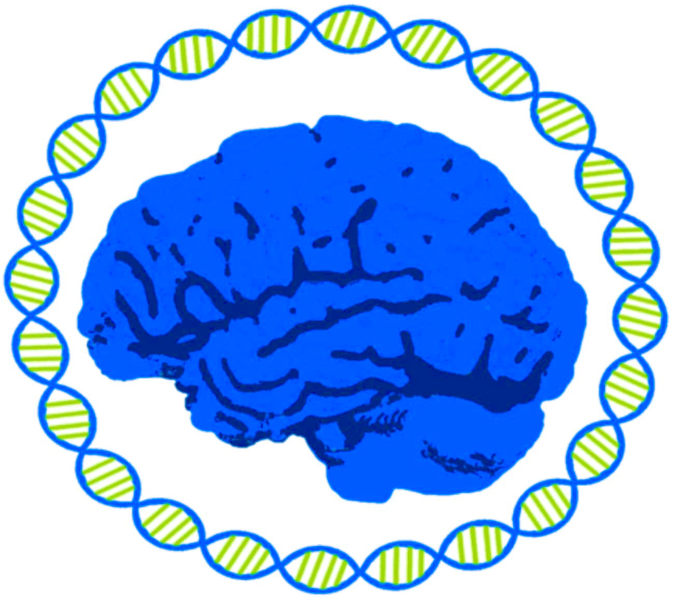
The overarching goal of the Dan Lewis Foundation for Brain Regeneration Research (the DLF) has been, for the past five years, to support biomedical and biotechnological discoveries that will bring the promise of regenerating and repairing the seriously damaged brain into reality. We pursue this goal by sponsoring neuroscientific conferences, publishing a quarterly newsletter, funding early career scientists with the DLF Prize program, sharing promising research nationwide, and posting brain injury information on social media. We strongly believe that biomedical and biotechnological solutions and options for regenerating the seriously injured brain are not only possible but inevitable. The key question is not an “if” question but rather a “how soon” question. Unfortunately, the current U.S. administration has adopted a somewhat negative stance towards the sciences in general, including the health sciences and biomedical research. With disregard for the way scientific knowledge accumulates, the budget slashers at DOGE, under the direction of the President and his Cabinet, have threatened serious cuts to NIH and NIMH research grants as well as to funds supporting students and faculty in neuroscience and biomedical training programs. Serious cuts to funding have already been made and further reductions can be expected. This short-sighted policy approach will significantly delay important discoveries across various scientific fields. Specifically, for DLF’s constituency, discoveries and related clinical trials that were potentially only a few years away may now be postponed by 5 to 10 years. The DLF continues to stand in support of neuroscientific and biomedical programs, their students, trainees, faculty, and researchers that have contributed so much to the field of regenerating the damaged brain. If you visit our website—danlewisfoundation.org—you will see “Donate” buttons scattered throughout the content. Please consider a donation, no matter how small or large—to help us continue our work to catalyze progress in brain regeneration research and to urge policy makers to correct course and return to solid support of biomedical and biotechnological advances that will be of so much value to the American public and to persons with serious brain injuries worldwide.
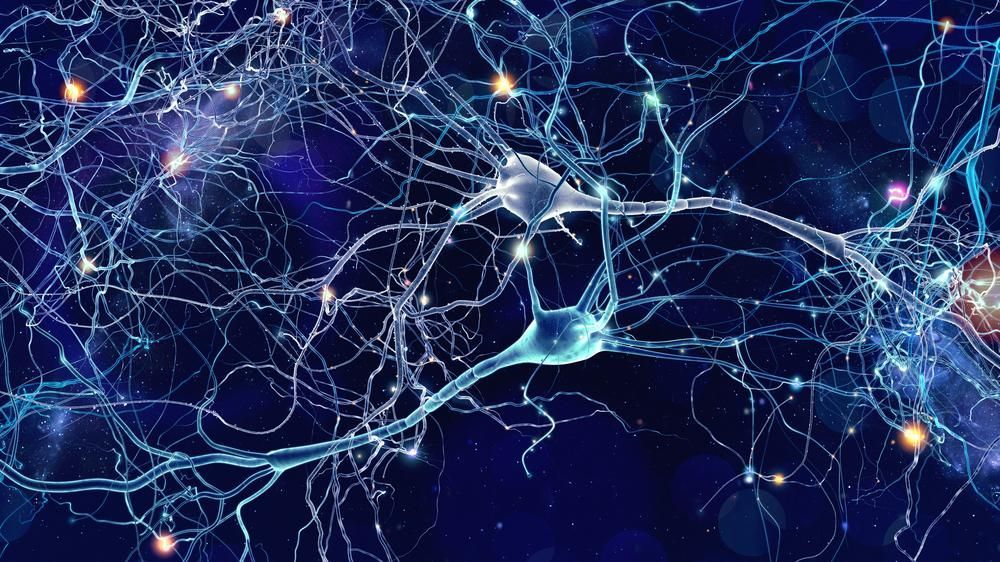
Introduction: The Paradigm Shift in Brain Regeneration For decades, scientists believed that the adult brain was incapable of meaningful regeneration. Unlike skin or muscle, the central nervous system (CNS) appeared to lack the ability to repair itself after injury, and lost neurons were considered irreplaceable. However, cutting-edge research now demonstrates that this is no longer the case. The brain possesses dormant repair mechanisms—pathways that were active during development but have been shut down in adulthood. By reactivating these pathways, it may be possible to induce neurogenesis (the birth of new neurons), axonal repair, and synaptogenesis (the formation of new neuronal connections) after devastating injuries like stroke, traumatic brain injury, and spinal cord damage. A growing body of evidence from both the spinal cord and the central nervous system (the CNS) shows that regeneration can be stimulated by downregulating the repressing factors that prevent neuron growth and repair. For clarity, “downregulation” means reducing the activity or number of something. In the case of a repressing factor, downregulation means lowering its levels or making it less active. A repressor is a protein that blocks a process—often by preventing a gene from being turned on. When the repressor is downregulated, it no longer effectively blocks that process, allowing the underlying function to be released or activated. These advances open the door to new treatments that could restore function to patients with neurological injuries, potentially reversing what were once thought to be permanent disabilities. The Science Behind Reactivating Brain Repair Neurodevelopmental genes and pathways that promote neuronal growth and plasticity are switched off after early development. However, researchers have identified key molecular regulators that act as “brakes” on brain regeneration. The “brakes” act as repressors of brain regeneration. By inhibiting these repressors, the brain’s intrinsic ability to regrow neurons and axons can be reactivated. Recent breakthroughs include: Neurogenesis in the Adult Brain : Research has shown that downregulation of PTBP1, an RNA-binding protein, can convert glial cells into neurons in the adult brain. Studies using antisense oligonucleotide (ASO) therapy to transiently suppress PTBP1 have successfully induced the formation of functional neurons in mouse models of neurodegeneration. For clarity, an antisense oligonucleotide (ASO) is a short strand of DNA or RNA designed to bind to a specific mRNA and regulate gene expression. By binding to its target, an ASO can block protein production, modify splicing, or mark the mRNA for destruction, effectively acting as a precise “off switch” for genes. In this context ASOs can be used to release glial cells to develop into functional neurons. Work is now underway to create ASOs that can be safely administered to humans, thereby stimulating the creation of new neurons. Axonal Regeneration in the CNS: Another major discovery involves unlocking nerve fiber regrowth by downregulating specific nerve growth inhibition, which prevents nerve fiber regrowth. Studies have demonstrated that suppressing these inhibitors leads to long-distance axonal regeneration, restoring function in spinal cord injury models. Synaptic Repair in Neurodegenerative Disease: Scientists have shown that modulating key synaptic receptors—such as mGluR5—can restore lost synaptic connectivity, improving brain network function in neurodegenerative diseases like Alzheimer’s. The neuronal connections and circuits in the brain are maintained in a stable state by the balanced action of different synaptic receptors. By modifying this balance, the rate of brain synapse formation can be increased or decreased. Together, these findings confirm that neural repair is possible when the appropriate repressive factors are removed, unlocking the brain’s natural regenerative capacity. Quiver’s Scalable Human Neuronal Platform: Accelerating Discovery While these discoveries are promising, translating them into effective therapies requires precise, scalable, and high-throughput screening technologies that can screen out or discover biomolecules that address a specific biomedical target by the thousands with great rapidity. One such technology has been developed by Quiver Biosciences using an all-optical electrophysiology platform. (Note: the author of this article is a co-founder of Quiver Biosciences) Quiver has developed a human induced pluripotent stem cell (hIPSC)-derived neuronal platform that allows researchers to measure functional activity in human neurons at an unprecedented scale. This platform is uniquely capable of: Directly measuring neuronal excitability, synaptic transmission, and network connectivity using optogenetics and advanced imaging techniques. Screening for new factors that inhibit brain repair, helping scientists identify additional repressors that need to be targeted. Evaluating small molecules and ASO-based therapies that may upregulate brain regeneration, assessing their efficacy and toxicity before advancing to clinical trials. The potential of this platform is vast. Scientists can now systematically search for drugs that mimic the effects of PTBP1 suppression, Nogo-A blockade, or mGluR5modulation—treatments that could one day be used to regrow neurons, reconnect severed axons, and restore lost synapses in patients with brain injuries. Key advantages of Quiver’s platform include: Scalability: Unlike traditional animal models, this system enables high- throughput drug screening on human neurons, increasing the efficiency of therapeutic discovery. Relevance: Because the neurons are derived from human stem cells, they offer a more accurate model of human brain function and disease than animal-based approaches. Safety Screening: The platform allows for early identification of toxic effects, ensuring that only the safest and most effective compounds move forward in development. By integrating AI and machine learning, Quiver’s platform also enables pattern recognition of successful drug candidates, identifying compounds with optimal efficacy and minimal side effects. The Role of Philanthropy: Funding the Future of Brain Repair Scientific breakthroughs alone are not enough to bring regenerative therapies to patients. Translational research—the process of developing basic discoveries into real-world treatments—is slow, expensive, and underfunded. This is where philanthropic support can make an immediate impact. Many of the pioneering studies on brain regeneration were initially considered too risky or unconventional for traditional funding sources. Yet, thanks to early philanthropic investments, these ideas have now been validated and are shaping the next generation of treatments. Today, funding is urgently needed to: Expand screening for regeneration-promoting drugs Optimize ASO-based approaches for inducing neurogenesis and axonal repair. Accelerate clinical trials for promising regenerative therapies. A New Era for Brain Regeneration For the first time, we have the tools to reactivate the brain’s own repair mechanisms, offering hope for individuals with severe neurological injuries. The path forward is clear: by investing in innovative research, scaling up discovery efforts, and supporting translational studies, we can bring brain-regenerating therapies to patients faster. The DLF raises funds and uses them to inspire, catalyze, and accelerate work towards brain regeneration. We increase public awareness of possibilities in brain regeneration through our social media, news “blasts”, and quarterly newsletter. And, we promote neuroscientific advances through consultation, networking, conferences, and seed grants. This is especially important when federal funding is limited. By supporting this work, we can help transform groundbreaking scientific insights into real treatments that restore lost function and improve lives.
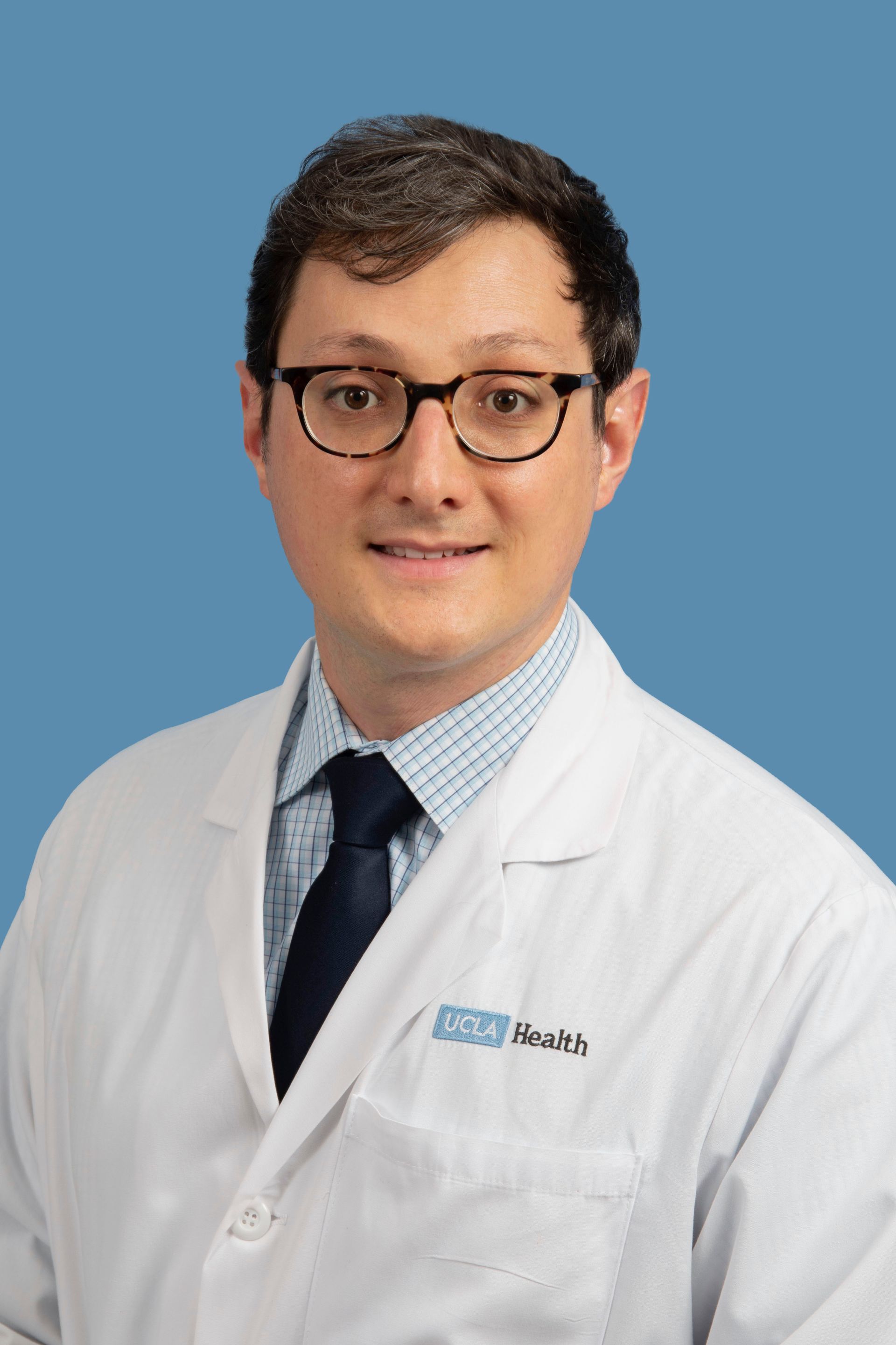
Stroke is a common neurological condition that damages brain cells (neurons) in the affected area, leading to a loss of the functions controlled by that region. A hopeful aspect of stroke recovery is that, over time and with rehabilitation, many individuals regain some abilities. This recovery has been linked to a process called “remapping,” where neurons in unaffected areas of the brain adapt to take over the functions of the damaged areas. Although many studies have explored this remapping phenomenon, most evidence has been indirect, based on changes in brain activation patterns or neuron connections after stroke in animal models. Direct proof that neurons change functionality after stroke has been lacking, partly because measuring neuron activity in the brain over time, especially at the necessary scale and duration, is challenging.
